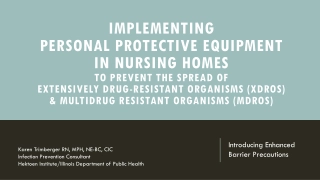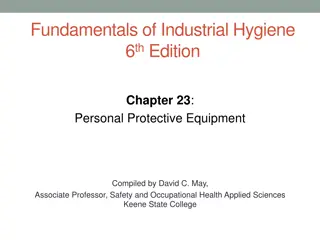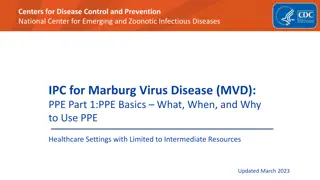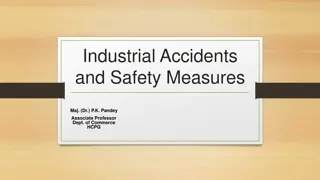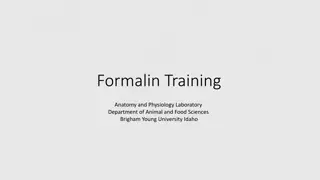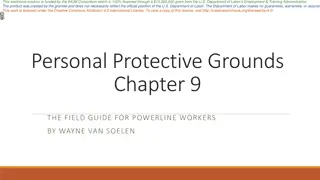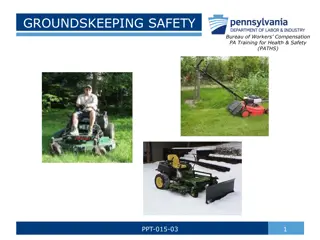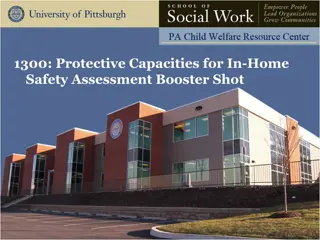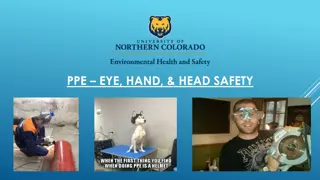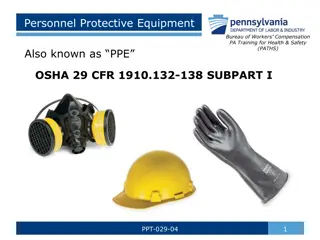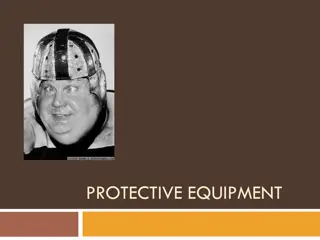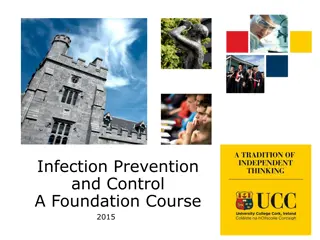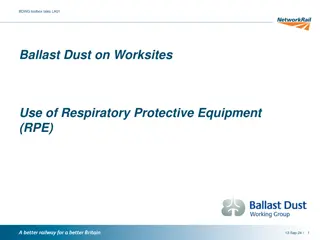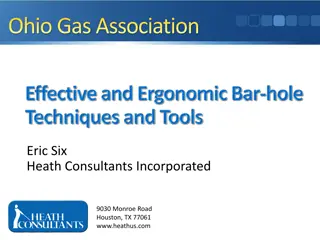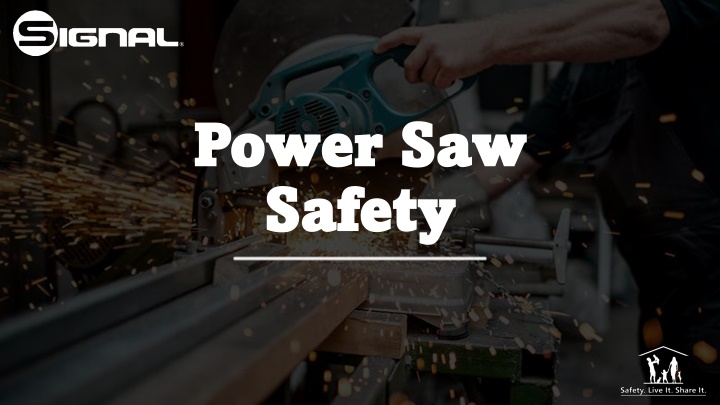
Ensuring Proper Use of Personal Protective Equipment
Personal protective equipment (PPE) is vital for minimizing workplace hazards that can lead to injuries or illnesses. It includes items like gloves, safety glasses, hard hats, and more. To ensure effective protection, PPE should be safely designed, maintained, and used correctly. Employers must provide proper training on when and how to use PPE, emphasizing fit, limitations, care, and disposal.
Download Presentation

Please find below an Image/Link to download the presentation.
The content on the website is provided AS IS for your information and personal use only. It may not be sold, licensed, or shared on other websites without obtaining consent from the author. If you encounter any issues during the download, it is possible that the publisher has removed the file from their server.
You are allowed to download the files provided on this website for personal or commercial use, subject to the condition that they are used lawfully. All files are the property of their respective owners.
The content on the website is provided AS IS for your information and personal use only. It may not be sold, licensed, or shared on other websites without obtaining consent from the author.
E N D
Presentation Transcript
Power Saw Power Saw Safety Safety
Disclaimer The contents of this document are intended only for the informational use of the addressee. The information contained herein is not intended as, nor does it constitute, specific legal or technical advice to the reader. Any information or recommendations contained herein are provided to the addressee for usage at their own discretion. Neither Signal Mutual Indemnity Association Ltd., its Members, Managers, or Signal Management Services, LLC and/or their employees accept liability whether in tort, negligence, contract, or otherwise, to anyone for any lack of technical skill, completeness of recommendations, or analysis of issues associated with the discussion of topics set forth herein. No responsibility is assumed for the discovery or elimination of unsafe conditions. Compliance with any recommendations herein should not assume your compliance with any federal, state, or local law or regulation. Additionally, the information contained herein does not constitute and shall not be construed to reflect the adoption of any coverage position by Signal Mutual Indemnity Association Ltd., its Members, Managers, or Signal Management Services, LLC and/or their employees.
PORTABLE BANDSAW RECIPROCATING SAW CIRCULAR SAW MITER SAW PORATBLE BANDSAW JIGSAW
What is personal protective equipment? Personal protective equipment, commonly referred to as "PPE", is equipment worn to minimize exposure to hazards that cause serious workplace injuries and illnesses. These injuries and illnesses may result from contact with chemical, radiological, physical, electrical, mechanical, or other workplace hazards. Personal protective equipment may include items such as gloves, safety glasses and shoes, earplugs or muffs, hard hats, respirators, or coveralls, vests and full body suits. What can be done to ensure proper use of personal protective equipment? All personal protective equipment should be safely designed and constructed and should be maintained in a clean and reliable fashion. It should fit comfortably, encouraging worker use. If the personal protective equipment does not fit properly, it can make the difference between being safely covered or dangerously exposed. When engineering, work practice, and administrative controls are not feasible or do not provide sufficient protection, employers must provide personal protective equipment to their workers and ensure its proper use. Employers are also required to train each worker required to use personal protective equipment to know: When it is necessary What kind is necessary How to properly put it on, adjust, wear and take it off The limitations of the equipment Proper care, maintenance, useful life, and disposal of the equipment
Always wear proper PPE when operating any handheld power saw. Wear eye protection, preferably Always wear proper PPE when operating any handheld power saw. Wear eye protection, preferably goggles or safety glasses with side protection, and depending on the task, face protection may be goggles or safety glasses with side protection, and depending on the task, face protection may be recommended as well. Wear closed recommended as well. Wear closed- -toed work shoes, with a good tread, for stability. Dust masks toed work shoes, with a good tread, for stability. Dust masks and hearing protection may also be recommended. and hearing protection may also be recommended. When using a handheld power saw, kickback can occur whenever the blade stops suddenly by binding up, jamming or hitting a foreign object. Saw blades build up tremendous kinetic energy during cutting and when they stop suddenly the energy must go somewhere which can cause the blade to strike the operator or cause the operator to drop the saw on their legs or feet. To minimize the risk of injury due to kickback, the operator must take all precautions to prevent the blade from stopping without warning and reduce the chance of being struck if the saw does stop suddenly. Do not use a power saw that is too heavy for you to lift and control. Ensure the saw blade is clean and sharp. Dull blades or blades sticky with sap or other materials are more likely to bind up in cuts. Always use the proper blade for the material being cut and maintain sharp blades. Do not stand directly behind the saw and do not lean into the cut to reduce the chance of being struck in the event of kickback. Maintain your balance and footing at all times. Never allow the blade to overheat. Do not make off-center or crooked cuts, only cut in straight lines. Remove cracked or damaged saw blades from service.
Power saws are very useful tools used to cut and shape all types of materials; however, they can cause serious hand injuries. The hands are vulnerable as they are used to guide pieces into the saw. The degree of injury can vary widely. Exercising power saw safety is extremely important to avoid deep cuts, broken bones or the loss of a hand or finger. Follow these tips: Never use your hands to clear the scraps from a sawing worktable. Instead, use a push stick. Do not wear loose clothing, jewelry or work gloves. They may get caught in the blade. Use sharp blades. Dull blades cause binding, stalling and possible kickback. Never drink alcohol while using a saw. When starting, let the saw reach full speed before cutting, and support the work firmly so it will not shift. NEVER look away from your work for any reason. Use the correct blade for the application. Set it for the correct depth to minimize the amount of exposed blade. Never disable safety guards, and always read instructions first. When starting or stopping the saw, make sure the work is not touching the blade. Lower a table saw blade below the table-top when finished.

